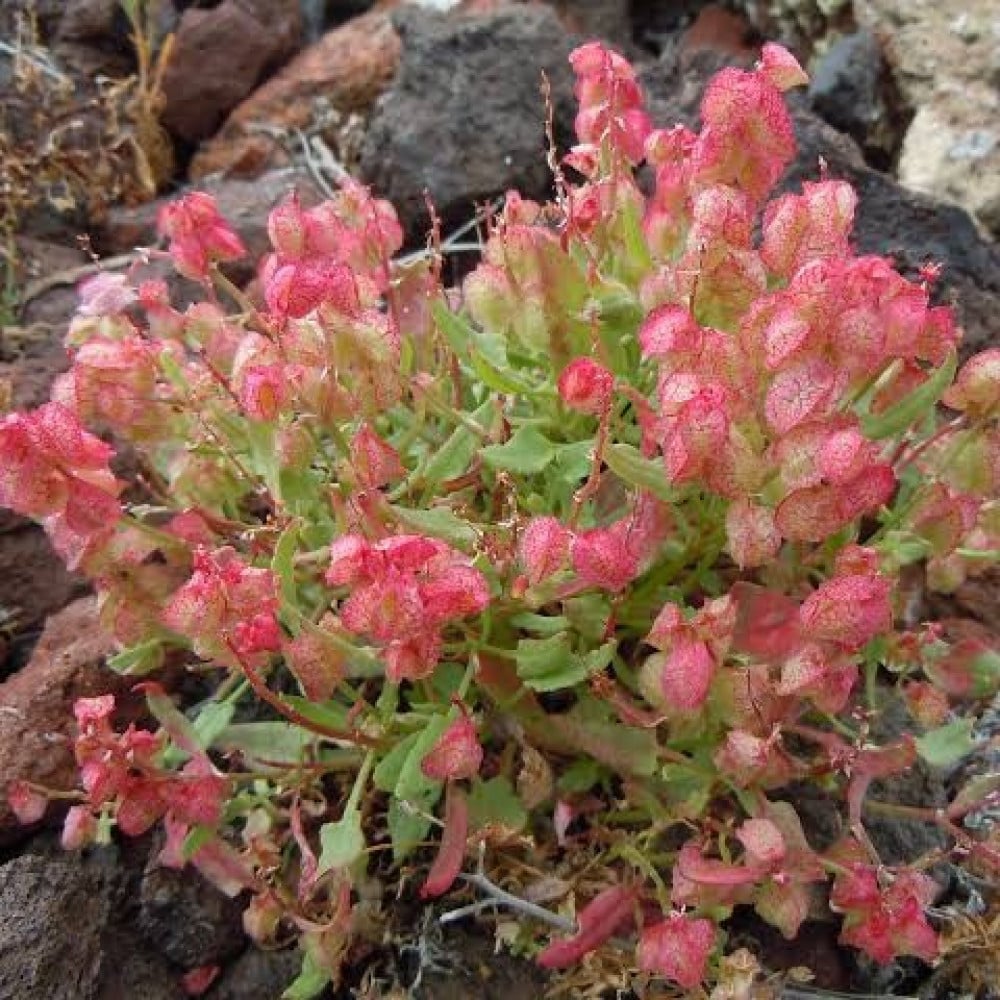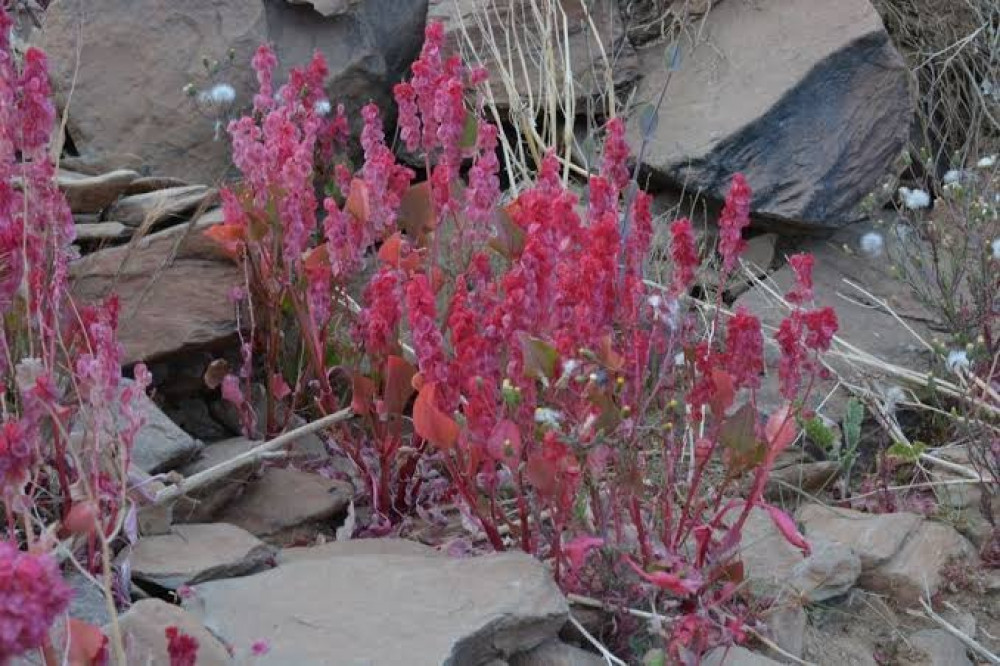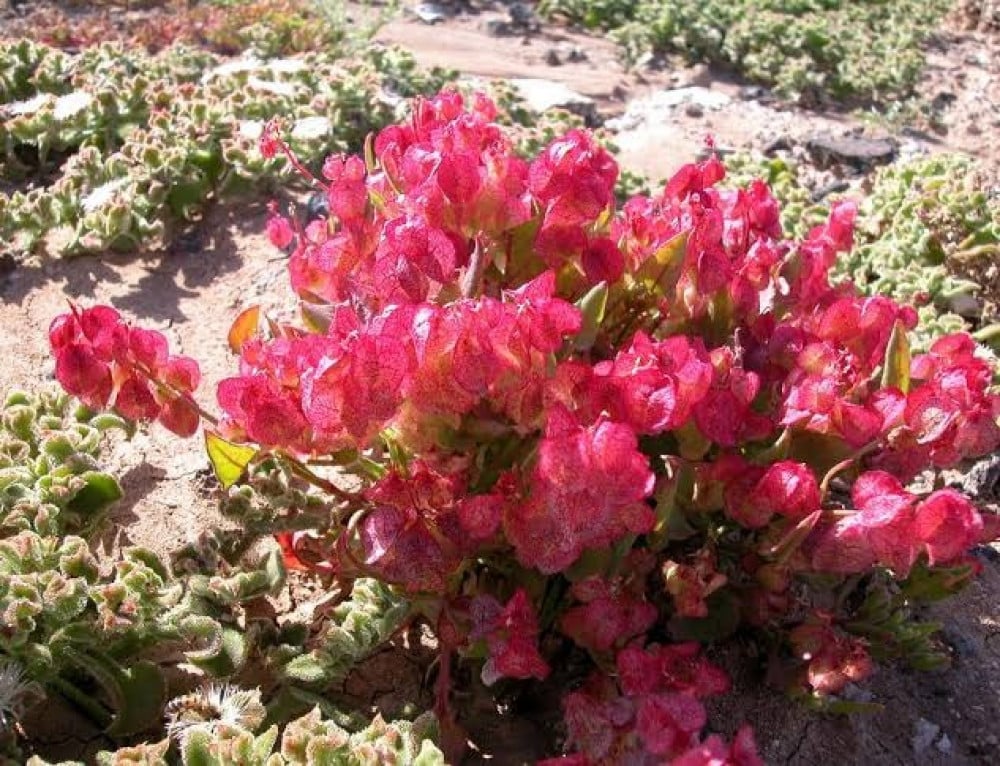بذور عشبة الحميض
70 بذره
الاسم الشائع : عشبة الحميض.
الاسم العلمي Rumex vesicariu
نبات عشبي حولي موطنه شبه الجزيرة العربية ويمكن ان يوجد في أنحاء المملكة العربية السعودية كافة. وهو نبات سريع
النمو ويصل ارتفاعه واتساعه إلى 50 سم. وشكله يشبه شجيرة قصيرة منتظمة وقائمة. والأوراق لحمية خضراء بيضاوية مثلثية الشكل وهي صالحة للأكل. والأزهار حمراء فاتحة شبه عنقودية تظهر في الربيع. وتصير الزهرة المجنحة حمراء قاتمة تحت ضوء الشمس الكامل. وتتكون البذرة داخل الزهرة المجنحة وحجمها 5 ملم. والإكثار يمكن أن يتم بواسطة البذور. وينمو في التربة الطمية وله مجموع جذري جانبي. والأفرع هشة سهلة الكسر وربما تتطلب الحماية من الرياح. والنبات متوسط التحمل للملوحة ويحتاج إلى تربة رطبة. وينترش النبات ويزدهر بصورة كبيرة في الصحاري وما حولها في نهاية الشتاء والربيع بعد الأمطار كاسياً المساحات الصحراوية بلون الأزهار الأحمر. ينترش النبات ذاتياً بواسطة البذور في ربيع كل سنة خصوصاً بعد الأمطار معطياً منظراجذاباً. وأثناء الصيف ومع ارتفاع درجة الحرارة يختفي هذا النبات حتى يحين الشتاء أو الربيع. ولأغراض عمارة البيئة فإن هذا النبات مفيد لتغطية المساحات المفتوحة وتثبيت المنحدرات. ونظراً لأنه من النباتات المحلية في المملكة فإن له قيمة كبيرة في إعادة تأهيل الغطاء النباتي الطبيعي. وله أيضاً قيمة كبيرة بوصفه
مغطي تربة ونبات مراقد في المناطق الحضرية، كما يصلح للإستخدام بوصفه نباتاً حولياً شتوياً للزراعة في الطرق.
A herbaceous plant native to the Arabian Peninsula and can be found in all parts of the Kingdom of Saudi Arabia. It is a fast growing plant, reaching 50 cm in height and breadth. Its shape resembles a short, regular, upright shrub. The fleshy, green, oval, triangular leaves are edible. The bright red, semi-clustered flowers appear in spring. And the winged flower becomes dark red in full sunlight. The seed is formed inside the winged flower, which is 5 mm in size. Propagation can be done by seed. And it grows in loamy soil and has a side root system. The branches are brittle, easy to break, and may require protection from the wind. The plant is medium tolerant of salt and needs moist soil. The plant spreads and flourishes greatly in and around deserts at the end of winter and spring after the rains, covering desert areas with a red flower color. The plant spreads itself by seeds in the spring of each year, especially after the rains, giving an attractive view. And during the summer, with a high temperature, this plant disappears until it is winter or spring. For environmental architecture purposes, this plant is useful for covering open spaces and for stabilizing slopes. And since it is one of the local plants in the Kingdom, it has a great value in rehabilitating the natural vegetation cover. It also has great value as a soil cover and shrine plant in urban areas, as well as suitable for use as a winter annual plant for road cultivation.



